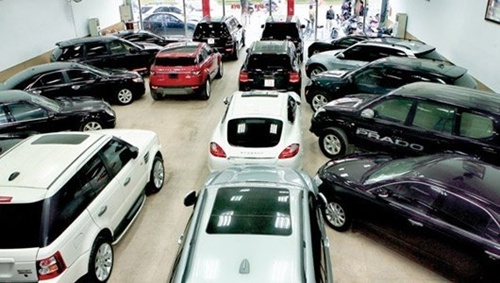No revision in special consumption tax on automobiles
 |
| The Government will not revise the special consumption tax rate on cars but it will reduce the tax once every three years. – Photo m.vef.vn |
The proposal was turned down at a meeting chaired by Deputy Prime Minister Hoang Trung Hai in Ha Noi last week, with the explanation that the National Assembly had approved a number of revised and supplemental clauses under the Special Consumption Tax Law last year, which will become effective by January 1, 2016.
Earlier, the Ministry had asked the Government to cut back the special consumption tax by 10 to 15 per cent, even 30 per cent for cars with a cylinder capacity below 1.5 litres, which is the category that is accorded priority under the national automobile industry development strategy and has been championed by domestic automobile businesses.
The tax reduction is expected to help expand the prioritized cars market and create conditions for businesses to raise locally-produced part rate.
However, the Director of the Heavy Industry Department, Truong Thanh Hoai told vneconomy.vn that the Government will consider to issue itinerary on reducing the tax once every three years.
As for cars with a cylinder capacity of more than three litres, the ministry had proposed that the Government boost the special consumption tax so that imports are lower than exports and the collection for the State budget increases.
There are currently four levels of taxation in the luxury automobile segment—correlated to cylinder capacity—such as tax levels of 120 per cent, 145 per cent, 170 per cent and 195 per cent are levied on cars with a cylinder capacity of three to four litres, four to five litres, five to six litres and more than six litres, respectively.
At the meeting, the Ministries of Industry and Trade and Finance agreed to keep the current automobile import tax. In particular, the registration and environment protection fees for cars will be adjusted to favour customers.
The two ministries also informed the Deputy PM about their synchronized measures to adopt the national automobile industry development strategy for the 2015 to 2020 period and discussed the issues of import tax, registration fee and credit for every project.
As scheduled, the Government will then take a decision on policies governing the automobile industry's development, showing clear signs, stability and long-term predictions for creating favourable conditions for firms to carry out their business in Viet Nam.
Itinerary on special consumption tax
From1998 till date, the special consumption tax on automobiles has been revised four times in keeping with the trend of regular reduction. Earlier in 2009, the tax was levied, based on the number of seats in the cars. From 2009 till date, the tax has been based on cylinder capacity.
From 1999 to 2003, a sedan with five seats or lower was taxed 100 per cent of the car value, while cars with six to 15 seats had to pay 60 per cent.
From 2004 to 2005, tax on a sedan with five seats or lower was reduced to 80 per cent, while cars with six to 15 seats had to pay 50 per cent.
From 2006 to March 31, 2009, a sedan with five seats or lower received a tax cut to 50 per cent, while cars with six to 15 seats were asked to pay 30 per cent.
From April 1, 2009 till date, taxes of 45 per cent, 50 per cent and 60 per cent have been levied on cars, with nine seats and lower, which have a cylinder capacity of below two litres, between two and three litres and more than three litres, respectively.
What the stars mean:
★ Poor ★ ★ Promising ★★★ Good ★★★★ Very good ★★★★★ Exceptional
Latest News
More News
- Vietnam's top 500 value-creating enterprises announced (December 27, 2025 | 08:00)
- The PAN Group shaping a better future with ESG strategy (December 26, 2025 | 09:00)
- Masan Consumer officially lists on HSX, marking the next phase of value creation (December 25, 2025 | 13:20)
- MCH to become the largest consumer stock on VN-Index (December 24, 2025 | 11:05)
- Oil and gas firms post strong 2025 results (December 22, 2025 | 17:42)
- SABECO wins multiple international beer awards (December 22, 2025 | 17:41)
- UOB sees Vietnam growth easing in fourth quarter (December 22, 2025 | 17:39)
- First members of Danang International Finance Centre revealed (December 22, 2025 | 17:39)
- Human-centred governance seen as key to AI development (December 19, 2025 | 18:19)
- Top 10 notable events of Vietnam’s industry and trade sector in 2025 (December 19, 2025 | 14:00)


















 Mobile Version
Mobile Version